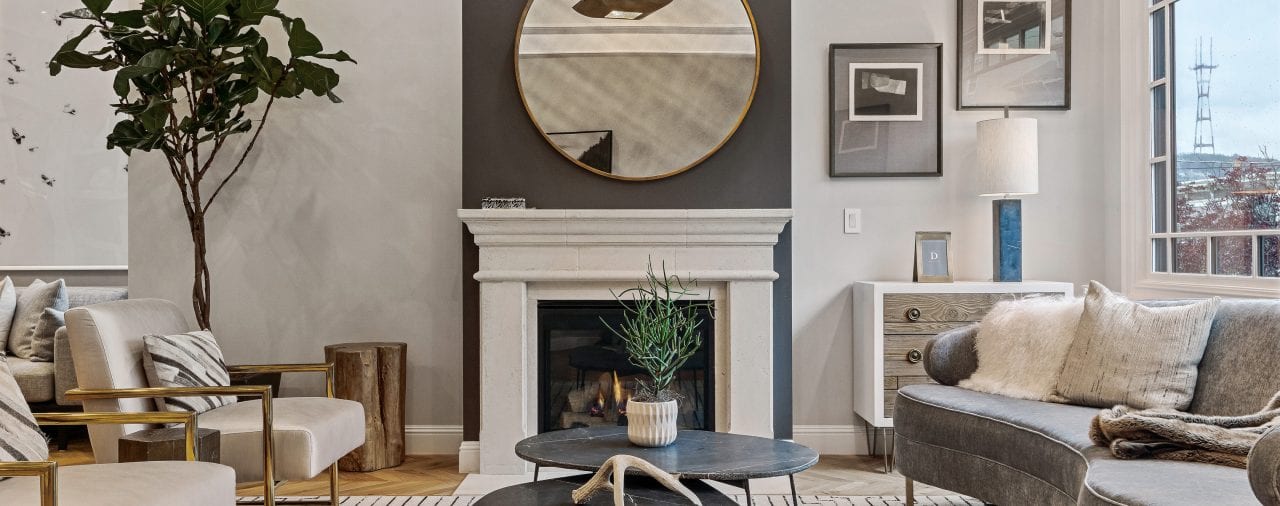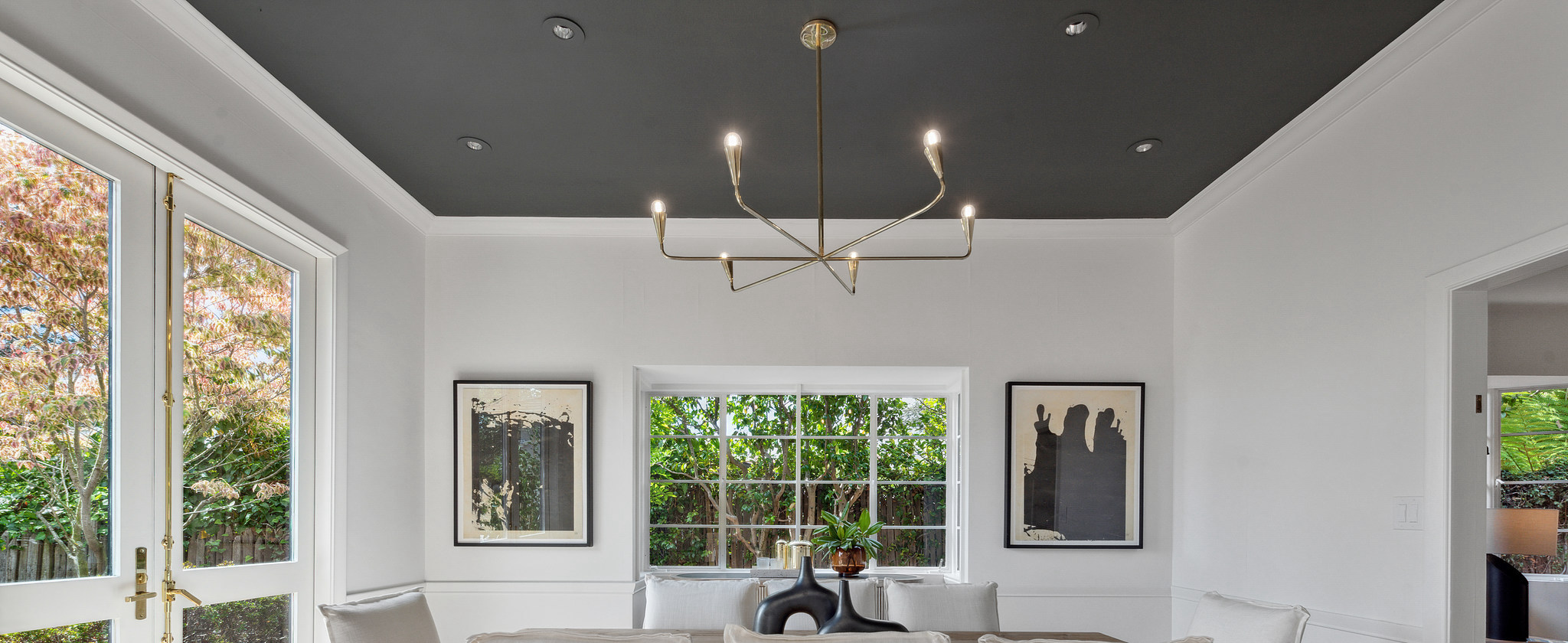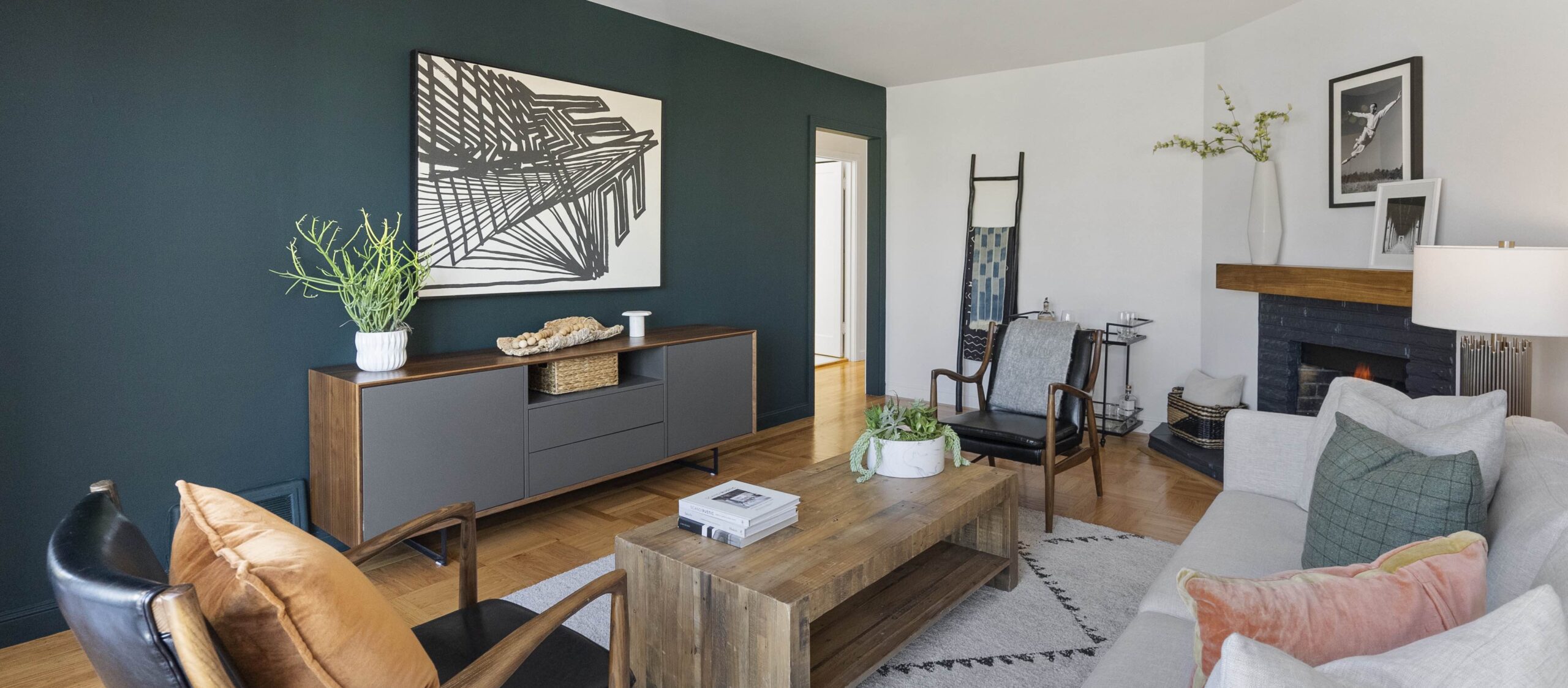
The Designers Have Spoken: ACCENT WALLS ARE STILL IN
Ahh, the accent wall. When done well, it can be a triumph of spatial design, for which you have guests clamoring to know how you decided on it. When executed poorly, it evokes the vibe of an outdated Pinterest save that you still have on a board from 2011.
Accent walls have always been a popular choice in homes for adding visual interest to a room. Boldly painted walls or strategically placed wallpaper help to add a focal point and incorporate some excitement and personality. But how do you know when and where to make your accent wall debut?
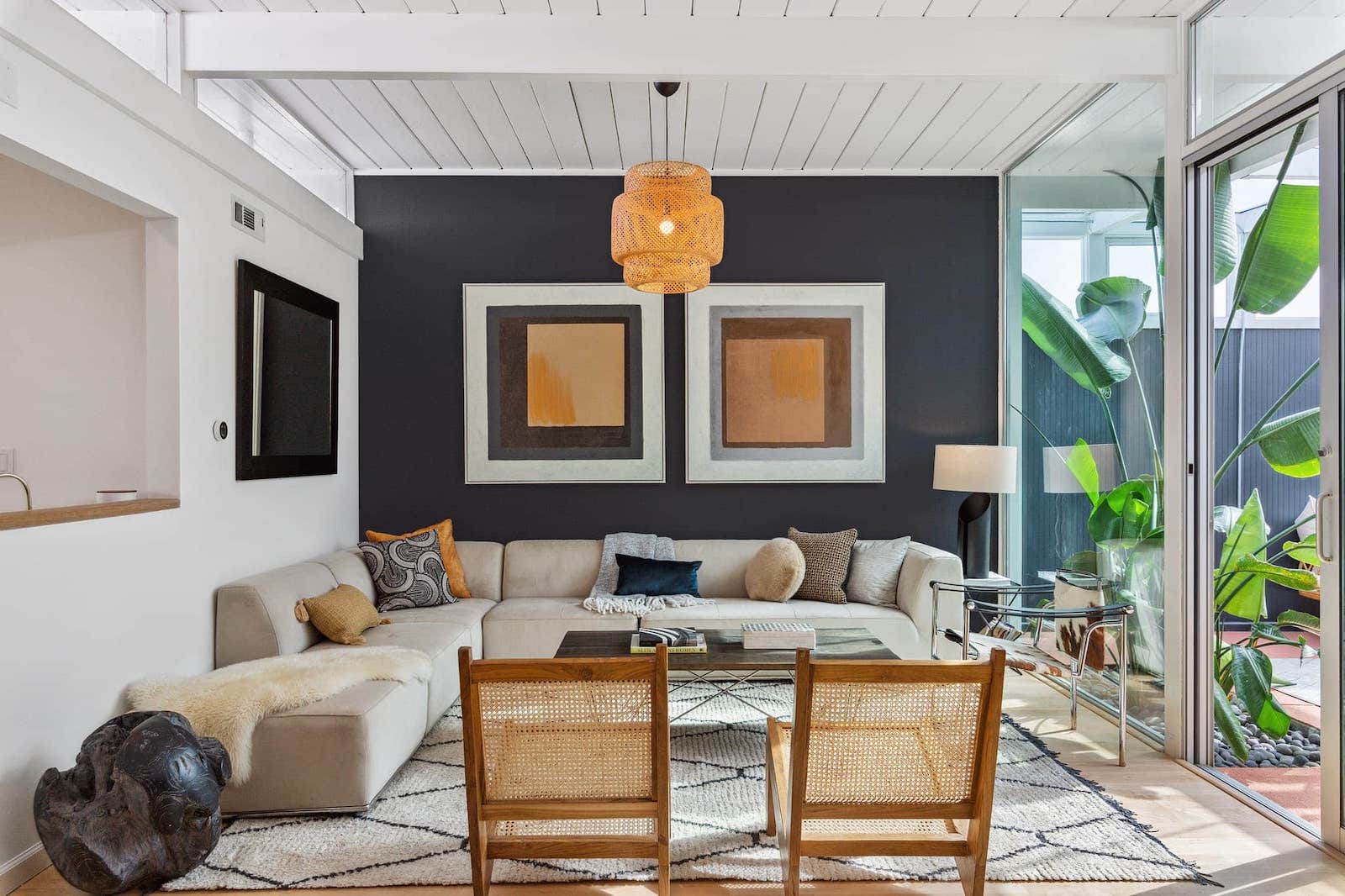
Staged by studio D. // 1005 Duncan Street, San Francisco, CA
Well, knowing that the purpose of an accent wall is to create a focal point in a room, think of where you’d like your eye to naturally gravitate when you enter a space. What do you want to emphasize? Is there a cool architectural element waiting to be highlighted? Is there a bland room that you want to bring life to? Have some fun with it!
Next, think of what it is you want to bring to the space. Dark colored walls create the illusion of depth. Wallpaper can add character. Textured walls can add variety. When choosing a color for an accent wall, it can be helpful to consider the overall color scheme of the room. An accent wall painted in a bold color can draw attention to a fireplace or a piece of artwork. Similarly, a contrasting color can be used to create a sense of depth.
It’s equally important to consider what will be in front of your wall. Will the color go with the furnishings, the artwork, etc.? To help determine what color was best suited for the wall in Duncan Street (above), we thought about how the accents in the room would be incorporated. The style of the light fixture, the cream tones in the furniture, and the warmth of the wall art all helped us land on the color of our accent wall.
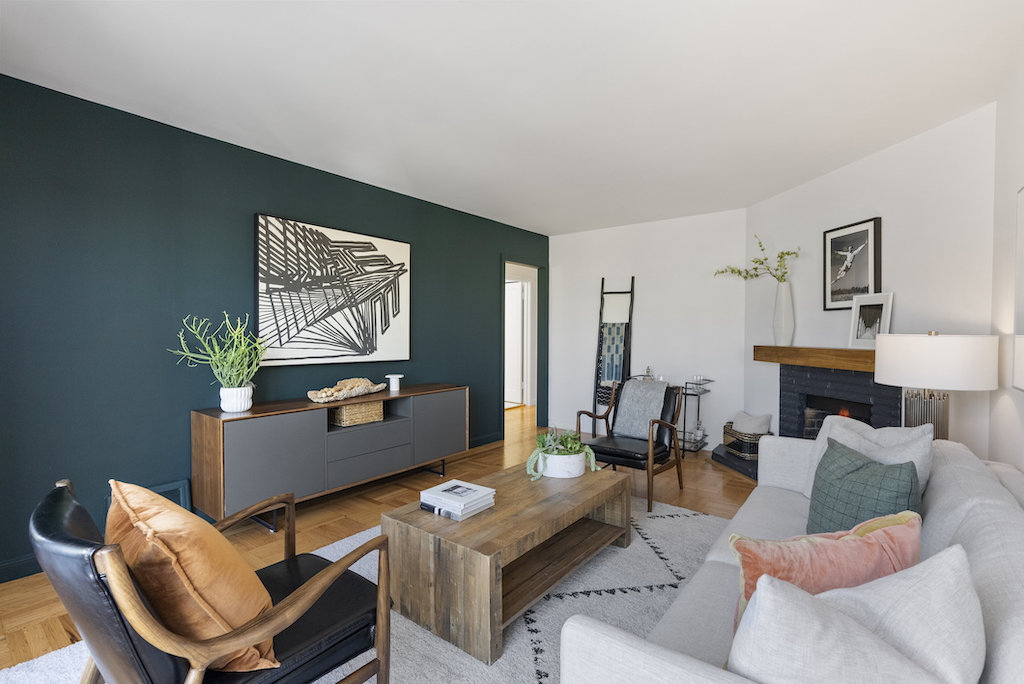
Staged by studio D. // 69 Ina Court, San Francisco, CA
A good rule of thumb is the 60-30-10 rule which states that 60% of the room should be the dominant color, 30% should be the secondary color, and 10% should be an accent color. That accent color can be a daring and playful nod to your taste and style.
The options are limitless with accent walls and your wildest ideas are most welcome in this decision! They’re an effective way to add a pop of color to a room and create a new focal point. If you haven’t already embarked upon the accent wall journey, please join us!
Featured Homes:
1005 Duncan Street, San Francisco, CA
SOLD in one month for $200,000 over asking!

